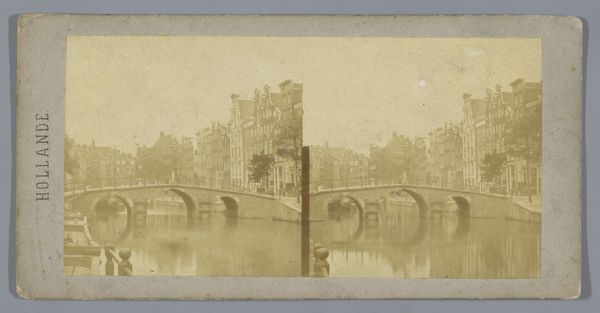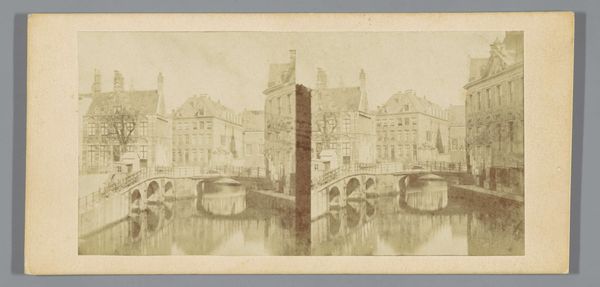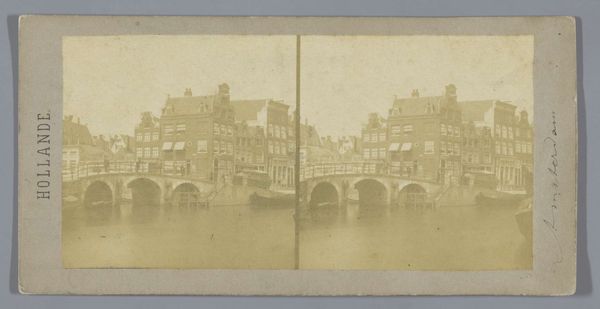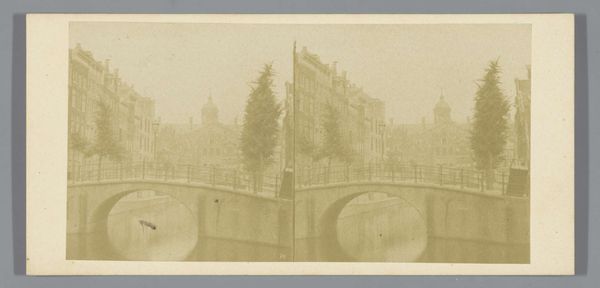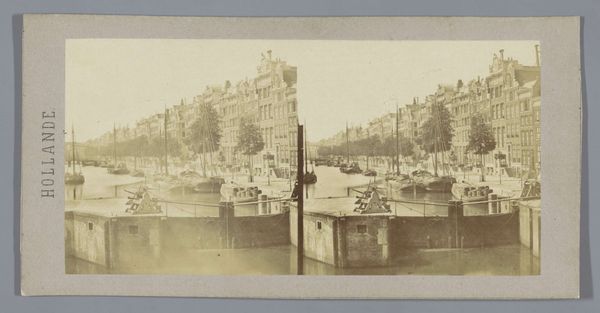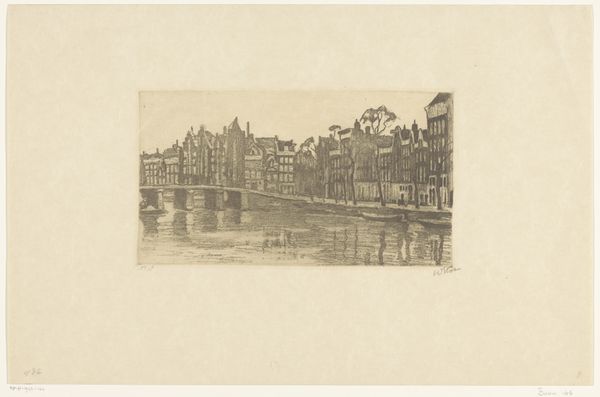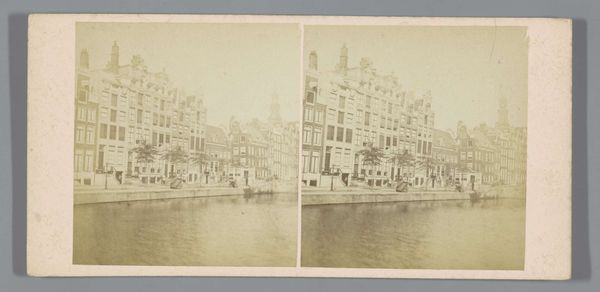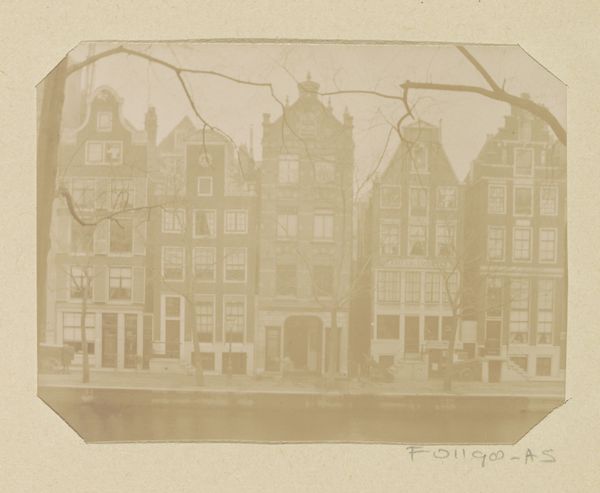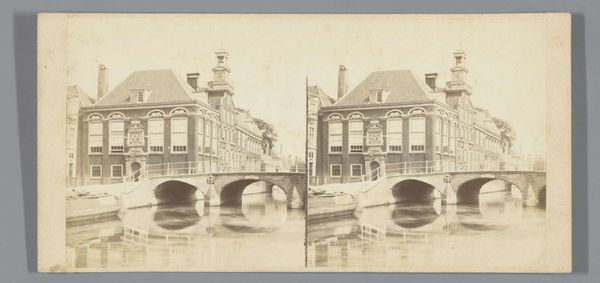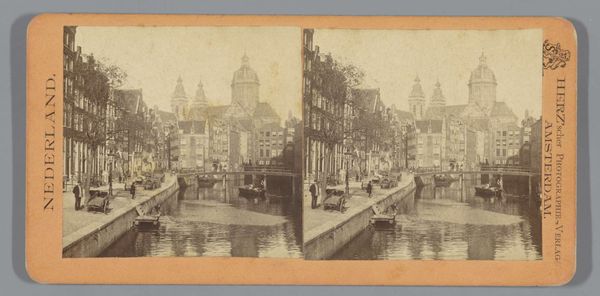
photography, albumen-print
#
16_19th-century
#
photography
#
cityscape
#
albumen-print
#
realism
Dimensions: height 84 mm, width 167 mm
Copyright: Rijks Museum: Open Domain
Editor: Here we have "Hoek Looiersgracht en Prinsegracht, Amsterdam," an albumen print by Charles-Henri Plaut, taken in 1858. The stillness of the water and the architectural detail create a rather serene, almost melancholic mood. What's your take on this early example of city photography? Curator: It’s fascinating how this image captures Amsterdam at a pivotal time in its urban development, particularly how photography, as a rising medium, began to shape public perception of cities. Early photography wasn't just documentation; it was about crafting a particular visual narrative, wouldn't you agree? Editor: Absolutely. So how might the choice of this subject, the canals and architecture, influence its role in constructing an image of Amsterdam for, say, international audiences? Curator: Well, Amsterdam’s canals were its lifeblood, integral to its economy and social fabric. Plaut's choice highlights a conscious decision to present a romantic, picturesque view of a city actively participating in global commerce. Consider that at the time, visual media significantly influenced investment and tourism; photographs like this served a clear socio-economic purpose beyond simple record-keeping. Do you think this staged calm is realistic, given Amsterdam’s role as a major port city? Editor: I see your point. There’s almost a sanitized quality to the scene, perhaps omitting the hustle and bustle of a working port to present a more appealing image. So this picture acts as a type of urban PR, doesn't it? Curator: Precisely! It prompts us to consider how photography has always participated in shaping perceptions and even manipulating public opinion. Editor: I had not considered the photograph in this light before. It's fascinating how it tells more of a political story than I originally realized. Curator: Exactly. Considering art through this lens unveils layers beyond the aesthetic, encouraging us to critically examine its social role.
Comments
No comments
Be the first to comment and join the conversation on the ultimate creative platform.
